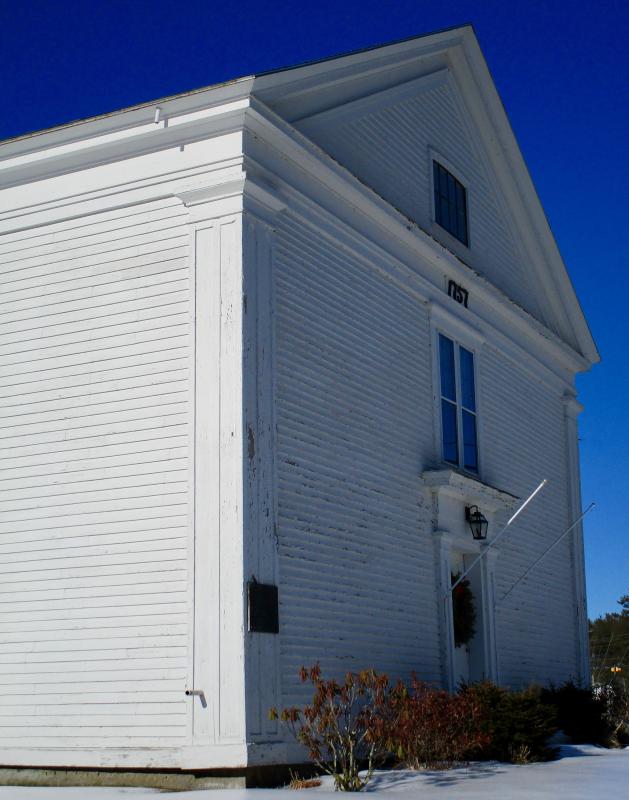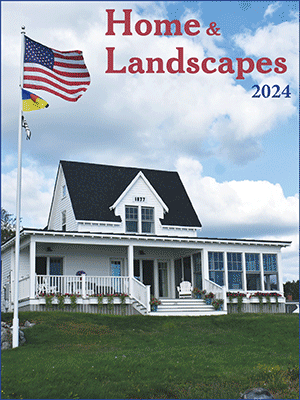The original purchase of Woolwich
The deal of century – the 17th-century that is – might have been the purchase of lands that today make up Woolwich. But the historic transaction meant two very different things to its Native American sellers and Colonial buyers.
To understand this better, we’ll flip the calendar back more than 150 years and read what lawyer- historian Rufus King Sewall of Wiscasset had to say about it.
Sewall’s account appears within his book of Northern New England history, “Ancient Dominions of Maine,” published in 1859. There’s a well-worn edition among Wiscasset Public Library’s collection and reprints can be found online. Squire Sewall’s book reaches back to the first English settlers and Maine’s earliest colonies located at Pemaquid, Popham and Phippsburg. Sewall also tells of Woolwich’s humble beginnings that began on Nov. 1, 1639.
That’s when two enterprising settlers purchased the area that later became Woolwich from the the tribal sachem or chief laying claim to it. The price agreed upon – “a hogshead of corn and thirty pumpkins.”
A “hogshead” in Colonial times was simply a large wooden cask or barrel. They were used to store molasses, rum, grain and so forth. They came in different sizes, some about 63 gallons. The “hogshead of corn” Sewall writes about was likely filled to the brim with ground cornmeal rather than whole ears but no one can say for sure. At any rate, the settlers got the better end of the bargain.
The transaction, continues Sewall, was between a native Kennebec sachem, Mow-ho-tiwormet, and two English planters from Pemaquid. Mow-ho-tiwormet, or Mohotiwormet, has been written about by other Maine historians. He was also known as “Robin Hood,” the name given to him by the English that lives on today in the nearby community of Georgetown where Robinhood Cove is located.
The mythical Robin Hood of England’s Sherwood Forest was known for robbing from the rich and giving to the poor. You can decide which party was doing the robbing when Mow-ho-ti-wormet placed his mark on the deed handing over his tribe’s ancestral lands.
The buyers were a pair of Englishmen, John Brown and Edward Bateman. The territory they bargained for was commonly called “Nequaset,” now spelled Nequasset. Its boundary was the “Sa-ca-di-ock River” now referred to as the Kennebec on the west, the “Shepscooke” (Sheepscot) River to the east and “Nequaseg” (Nequasset) pond. The transaction included one “wigwam, or Indian house,” according to Sewall. The boundary included a sizable portion of Woolwich.
Brown is thought to have been among the first English settlers in the area. He arrived from Bristol, England in 1622 and settled on the Pemequid Peninsula. Squire Brown moved his family to Nequasset following the purchase. He later sold out his interest in the property to Bateman and probably for a lot more then just a few pumpkins and a barrel of corn.
Land transactions meant different things to the English and the Native Americans. The Native Americans didn’t believe “selling” their ancestral lands prevented them from continuing to hunt, fish, forage and camp on them whenever they pleased. The enterprise-minded settlers had different ideas; they wanted to harvest the timber, farm and raise livestock.
Another problem was that Native American leaders sometimes sold lands claimed by other tribes who saw no reason to honor the agreements.Unfortunately, the cultural differences led to tensions, acrimony and violent conflicts between the Native Americans and settlers lasting for many years.
Other stories about Woolwich’s past including the one about its founding can be found in a “History of Woolwich Maine – A town Remembered” published in 1994 by the Woolwich Historical Society.
Woolwich, part of Sagadahoc County; stretches from Merrymeeting Bay and the Kennebec River to the Sheepscot’s Back River. It has a town meeting form of government, a tradition that started October 20, 1759 when Woolwich was incorporated as a town.
Event Date
Address
United States
























